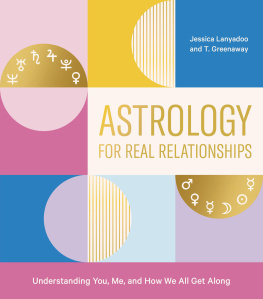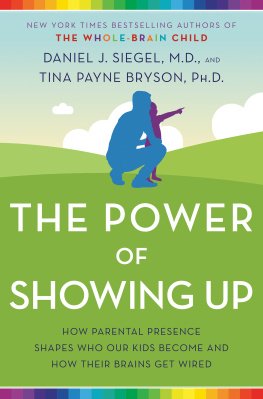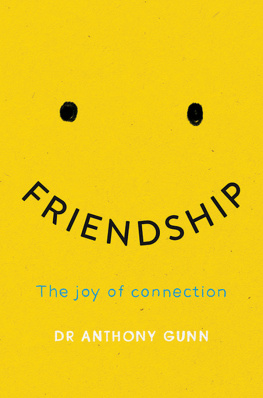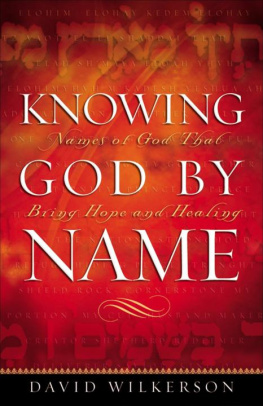


Chapter 1
Getting to Know Yourself
S elf-knowledge is at the core of showing upbecause you cant possibly take care of yourself if you dont actually know what your needs are. Once you figure out who you are (and who you are not), it becomes much easier to understand what you want to do (and not do), and to recognize the types of people you want in your life (and those you dont). Theres not much space for generosity, confidence, or vulnerability when youre constantly worried about whether you have enough and are enough.
Knowing yourself is also at the heart of showing up for other people. At a basic level, if you arent self-aware, its impossible to recognize how youre making other people feel. But it goes even deeper than that: The more you unpack your own motivations and patterns, and name and honor your own needs, the easier it becomes to do the same for othersto understand why they are behaving a certain way, to view their needs as legitimate, to withhold judgment when they are struggling, to be kind and compassionate, and to respond in a way that makes them feel seen. When you are firmly rooted, you can fully stand up for others.
So, what does knowing yourself even mean?
- Being able to name the main qualities that make you you
- Having a clear sense of your core values and your priorities
- Knowing what you like and dont like
- Identifying what makes you feel comfortable and uncomfortable
- Acknowledging what you are willing and unwilling to do
- Being aware of how youre likely to react (or are reacting) in a given situation
Seems easy enough, right? But its not exactly, or at least, its not easy for everyone. If youve gone through life believing one story about yourselfeither a story you invented, or one others wrote about youit can be hard to suddenly stop and ask yourself if its actually true. Figuring out that truth can, at times, be an uncomfortable process. But it can also be enlightening and therapeutic and fun.
As you read this chapter (and, really, this whole book), try to resist any urge you have to immediately overhaul your life based on your newly acquired self-knowledge. I know how hard this can beintense self-examination can make you want to burn down your entire life ASAP. (But, like, in a good way? Sort of?) But I feel pretty strongly about holding tight for a moment, because its important to get comfortable with the first three steps of the showing-up processnoticing, naming, and processingand just sit in that place for a sec before you move on to the fourth step: responding. (This is extra important if you tend to love big goals; are very all or nothing; or have, on more than one occasion, gotten extremely excited about a magic solution that you swore was going to change your whole life and then... did not do that.) Listen, I love a grandiose resolution and the ensuing shame spiral once it fails as much as the next gal... but the goal here isnt a big makeover montage; its acceptance.
When I say acceptance, I mean bearing witness to what is true about yourself and your lifeeven the messy, painful, embarrassing partsso you can respond to that reality. Acceptance is about being brave enough to look at who you are and not turning away or immediately looking for a fix when you dont like what you see. Its not about settling; after all, you may still want to make significant changes that will ultimately make your life better. Its about graceoffering yourself compassion and mercy, even if youre not totally convinced you deserve it.
If you dont know yourself, you cant accept yourself... and if you dont accept yourself and your own limitations, you cant truly show up for yourself or anyone else.
So, lets begin.
During this getting-to-know-yourself process, consider starting a journal expressly devoted to, well, you, and to the things about you that seem unchanging, significant, and close to your heart. That could include answers to some of the questions in this chapter; compliments or kind words you want to remember; prayers, meditations, or mantras that move you; things you like about yourself; and your go-to self-care ideas. Think of it as an encyclopedia of you, a little scrapbook of the soul. Its a simple way to document whats in your heart and to stay grounded when the world around you feels out of control. When youre feeling lost or overwhelmed, you can return to this notebook and remember that you are still here, and you are enough.
Your Values
If youre not a fancy private school or a bland corporate website, you might find the idea of listing your core values to be a bit formal. But Im going to encourage you to do it anyway! Our values are incredibly important to who we are; they inform our priorities and decisions, guide our behaviors, and shape our relationships. And yet, Im pretty sure most of us could rattle off a few years worth of inane celebrity gossip faster than we could name our personal values, probably because most of us just dont think about our values all that much. Sure, they are in our brains, vaguely, up there somewhere.
But making decisions without a working knowledge of your own values is a bit of a fools errand! As I write this, its 10:00 am and Ive already had to make a lot of choices. I had to decide whether to hit snooze, what to have for breakfast, what clothes to wear, whether and how to respond to several text messages, if I should have more coffee, whether I should check my email, and whether to do the crossword, open Twitter, pick up the novel Ive been reading, or just start working. And thats not counting any of the decisions I made about the work itself!
Sure, some of these choices might feel fairly low-stakes, but even the smallest ones have an effect on my mood, my energy, my relationships, my health, and my livelihoodand are rooted in my values in some way. So many of our decisions are related to how well spend our most valuable resources: our time, money, and energy. (More about these later! See .)
Here are some of the everyday decisions that are typically tied to your values.
- How you get to school/work
- The foods you eat
- The clothes you buy and wear
- Who you spend time with (friends, family, coworkers)
- How much time you spend with them
- How much time you spend on your phone and what specifically youre doing on it
And its not like you can simply opt out of the valuesdecisions connection; if your choices arent rooted in your values, it just means that someone elses values will dictate what you do.
So take a little time (either right now or, say, in the next couple of days) to think about your values, with the goal of identifying five to ten that you feel represent you. If youre not sure what your values are, here is a short list of values that may or may not resonate with you to use as a jumping-off point. (And if none of these seems to be quite right, a quick Google search will turn up lists with hundreds of highly specific and very inspiring ideas.)
| Acceptance | Faith | Knowledge |
| Achievement | Fame | Obedience |
| Adventure | Family | Open-mindedness |
| Advocacy | Financial security |
Next page










